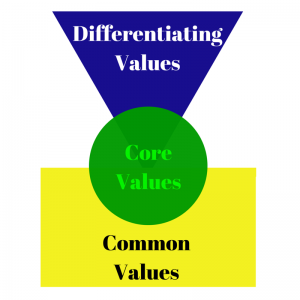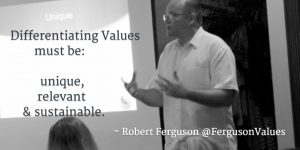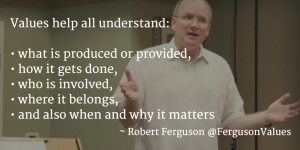Persuasiveness in Marketing: FUD vs. Brand Building
 Marketers often get a bad rap.
Marketers often get a bad rap.
They are viewed by some as conniving, evildoers who will say anything to get you to believe them. Or they are viewed as slick sales people who will spin the truth just to make a sale. Or worse, they are viewed as manipulators who will cunningly persuade you to buy their products or services.
Ouch.
The use of the term ‘persuade’ is often viewed from a negative perspective. Yet, each person on this planet attempts to persuade someone else with good intention – everyday.
Consider the woman encouraging someone to donate to her charity. Or the unemployed man urging a prospective employer to hire him. Or what about the poor soul trying to convince the seller of grain to sell some food for half price, because that’s all the money he has.
As a differentiating value, Persuasiveness means ability to influence judgment or emotions; power to induce action or belief.
For marketers, the most common ways to embrace the value of persuasiveness are either FUD or brand building.
Persuasiveness through FUD
When marketers need short-term results they often default to employing the ‘FUD’ factor: Fear, Uncertainty, and Doubt.
Security system companies are notorious for using the FUD factor in their promotions.
- What if someone breaks into your little girl’s room when you’re not there to protect her?
- Don’t wait, buy now before this special deal is gone!
- Are you sure you set the alarm before you left home?
Then there are financial firms trying to promote their investments by questioning if you’ll have enough money saved for retirement. Time is money and you are missing out!
Even environmentalists use fear to try and change public behavior to be more conscientious of the environment. On the one hand they use tons of negative data to try and prove their points. On the other hand, they use dramatic images of impending doom to attempt to scare the public into changing behavior.
Of course, the news media are masters are leveraging the power of FUD to get consumer attention – permitting them to sell more ads (more eye-balls = more money). Just consider the following headlines:
- We’re Headed Over the Fiscal Cliff
- Federal Reserve Concerned about Stimulus Side Effects
- Patients Lose as Hospitals to Bear Brunt of Medicare Cuts
While the use of FUD in marketing may get consumer attention, does it really induce action, or influence a change in consumer behavior? There is some evidence it works in the short-term, which is why it is used.
But to effectively influence emotions and alter beliefs that change consumer behavior over the long-term, a different kind of marketing must be employed.
Persuasiveness through Brand Building
Great marketers – like Coke, Nike, Apple, Google, Amazon, and even Victoria Secret – avoid the use of FUD in their marketing. They know the secret to creating sustainable positive change – that includes their products and services – is through brand building.
To build a successful brand, great marketers identify and develop a set of brand values that address three things:
1) They are Unique to the organization, product or service. The brand values describe the organization, product or service in a way that competitors can’t say or do the same.
2) They are Relevant to customers and other stakeholders. The brand values make a difference for customers and other stakeholders in a meaningful way.
3) They are Sustainable over a reasonable period of time. The organization, product or service can deliver the brand values in a consistent manner for at least the next 3 to 5 years, ideally longer.
When the set of brand values are unique, relevant, and sustainable, then the brand promise becomes much easier to make.
- Coke = Happiness
- Nike = Victory (“Just do it”)
- Apple = Radical creativity
- Google = Answers
- Amazon = Buy online
- Victoria Secret = Sexy lingerie
There’s a reason these brands are worth so much. Their ability to persuade consumers in a positive manner far exceeds any marketer that uses the FUD factor. Brand builders are in business for the long-term.
What other marketers are demonstrating persuasiveness through branding?
How can the value of persuasiveness help give you a competitive advantage?
Today’s value was selected from the “Effectiveness-Influence” category, based on the e-book Developing Your Differentiating Values.







